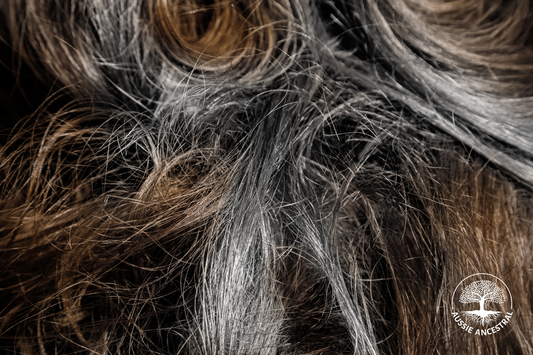Welcome back for part two of our iron blog mini-series!
In part one we discussed iron deficiency anaemia (IDA), who's most at risk of IDA, symptoms and causes of anaemia, what iron is and why it is so important.
If you missed Part One or would like to revisit it then click HERE.
What we are going to cover in part two:
- The difference between haem vs non-haem iron
- Sources of iron
- How much iron do we need (RDI)
- Iron inhibitors - what affects iron absorption
- Fortified iron foods
- Synthetic iron supplements and side effects
- Copper and Iron relationship
The difference between haem & non-haem iron
Iron comes in two forms, haem and non-haem. Haem iron comes from animal sources such as red meat, fish and poultry.
Non-haem iron comes from plant sources such as vegetables, fruits and nuts.
The major difference being haem iron is absorbed at around 30% whilst non-haem is anywhere between 2-10%.
If you follow a plant-based diet, you will need to eat about 80% more iron to meet your dietary requirements.
The absorption rate of iron has been reported as 25–30% in the consumption of organ meats, 7–9% in green leafy vegetables, 4% in grains, and 2% in dried legumes, indicating that food types or other dietary factors might influence iron bioavailability. *
So if you’re wanting to maximise your iron absorption then iron sources matter!
Did you know that over 95% of functional iron in the body is haem?
Iron Sources
Haem iron is found in:
- meat — beef, lamb, pork, and kangaroo
- poultry — chicken, turkey, and eggs
- seafood — salmon, sardines and tuna
- organ meats — liver, kidney and pate
Non-haem iron:
- iron-fortified bread and breakfast cereal
- infant formula
- nuts and seeds
- dried fruit
- wholemeal pasta and bread
- legumes — such as mixed beans, baked beans, lentils and chickpeas
- dark leafy green vegetables — such as spinach, silver beet and broccoli
- tofu
In the graph below we look at the amount of iron per 100g in haem vs non haem sources.

Next we’ll look at the amount of iron absorbed based on absorption rate of haem vs non haem sources as mentioned above.

So how much iron do we actually need? Pictured below shows the recommended dietary intake for iron.

As you can see adolescent girls and women aged 14-50 years have higher needs to account for menstrual losses. Please note: In setting RDIs for women, it was assumed that women over 50 years old do not menstruate.
During pregnancy, iron requirements increase to support both the mother and the developing fetus.
During breastfeeding these estimations assume that menstruation does not resume until after 6 months of exclusive breastfeeding.
What can inhibit our iron absorption?
Inhibitors of iron absorption include phytate, which is a compound found in plant-based diets that demonstrate a dose-dependent effect on iron absorption.
Polyphenols are found in black and herbal tea, coffee, wine, legumes, cereals, fruit, and vegetables and have been demonstrated to inhibit iron absorption. (2)
A first patent was issued in 1964 for use of glyphosate as a metal chelating and descaling agent (US Patent No. 3,160,632), in order to clean out mineral deposits in pipes and boilers. (3)
Glyphosate, which is the active ingredient in Roundup and many weed killers chelates copper, copper is essential for absorbing iron from the gut which we’ll go into in Part three.
Nutrient deficiencies. Iron alone doesn't regulate iron! This is a BIG ONE which we will be covering in next week's blog (Part 3 of our iron blog mini series) Click here to sign up so you don’t miss out.
Synthetic Iron
Natural vitamins are those you get from whole food sources such as meat, eggs, dairy, fruits and vegetables etc. Whole food supplements are made from concentrated, dehydrated whole foods that have been powdered. Whereas synthetic vitamins are made artificially in labs (also referred to as isolated vitamins). Most supplements today are made with artificial vitamins, antioxidants, minerals and amino acids.
Many nutrients work in conjunction with other vitamins and minerals rather than separately and are needed in certain ratios. Many supplements synthetically made have incorrect ratios and are missing co-factors needed for optimal use by the body.

What are these side effects? Well there is a good chance you have already experienced some of them if you have been on iron tablets before. The common side effects of synthetic iron include:
- Nausea
- Vomiting
- Diarrhoea
- Constipation
- Dark stools
- Bloating
- Pain
- Digestive issues
Fortified Foods
So what are fortified foods? Fortifying adds synthetic micronutrients (vitamins and minerals) to foods, whether those micronutrients were originally present or not. The main iron-fortified foods are:

- Breakfast cereals
- Bread
- Pasta
- Baby foods
- Dairy alternatives
- Flour
This leads to the question, if there is so much iron and iron fortified foods available today, how can it be that so many people seem to be anaemic?
You’ll have to tune into Part Three of our mini series on iron where we will cover iron overload, the iron recycling system and the all important crucial cofactors necessary for iron absorption and utilisation.
Part three will round out our mini series and explain why your standard iron supplement might be doing more harm than good. It may also give you that lightbulb moment that will explain why you stay stuck on the low iron merry-go-round.




